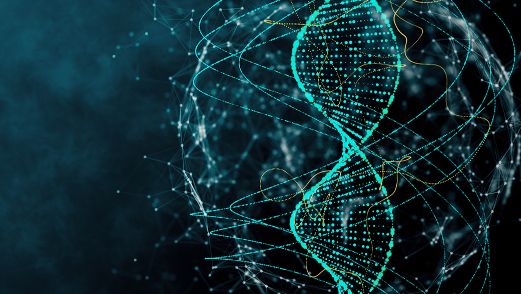



In this eLearning module, you will learn about Cubital Fossa. An area of transition between the anatomical arm and the forearm. The location of it is in the depression on the anterior surface of the elbow joint. It is also know as the antecubital fossa because it lies anteriorly to the elbow. It is a space filled with different structures that makes up its content. The cubital fossa has three boundaries and it has a floor and a roof.
In this eLearning module, you will learn about Axilla. The axilla is located in the anatomical region under the shoulder joint where the arm connects to the shoulder. It contains different neurovascular structures, including the axillary artery, axillary vein, brachial plexus, and lymph nodes. The anatomic borders of the axilla include the superior, anterior, posterior, lateral, and medial walls. The size and shape of the axilla region varies with arm aduction. The contents of the axilla region include muscles, nerves, vessels, and lymphatics. The axillary artery provides the primary blood supply to the axilla.
In this eLearning module, you will learn about Anterior compartment of arm. It is one of the two compartment of arm. There is a sheath of deep fascia surrounding the arm called the brachial fascia. There are three muscles located in the anterior compartment of the upper arm. The biceps brachii, coracobrachialis and brachialis. Everything here is innervated by the musculocutaneous nerve. Arterial supply to the anterior compartment of the upper arm is via muscular branches of the brachial artery.
In this eLearning module, you will learn about Posterior compartment of arm. The posterior compartment of the arm is one of the two compartments in the arm. The posterior compartment contains mainly the triceps brachii muscle. Two intermuscular septa (medial and lateral) extend from it to attach to the humerus at the medial condylar ridge and lateral supracondylar ridge, respectively. Arterial supply to the posterior compartment of the upper arm is via the profunda brachii artery.
In this eLearning module, you will learn about the Palm of the Hand: Intrinsic Muscles. Intrinsic muscles are responsible for position grip. Muscles that originate in the hand & are responsible for position grip are the intrinsic muscles. 4 muscle groups comprise the intrinsic hand. These are the thenar, hypothenar, interossei, and lumbrical muscles.
In this eLearning module, you will learn about the Scapular Region & Intermuscular Spaces. The scapular region is the superior posterior surface of the trunk & is defined by the muscles that attach to the scapula.Triangular Intermuscular Space is defined by borders of the Teres major, Teres minor, and long head of the triceps.
In this eLearning module, you will learn about the Posterior Compartment of the Forearm. The posterior Compartment of the Forearm is between the elbow and wrist joints. It contains 12 muscles and these muscles are chiefly responsible for flexion of the wrist and digits, and supination of the forearm. It is separated from the anterior compartment by the interosseous membrane between the radius and ulna.
In this eLearning module, you will learn about the Pectoral Region. It is the anterior region of the upper chest, where there are 4 thoracoappendicular muscles, also known as the pectoral muscles. They are pectoralis major, pectoralis minor, subclavius, and serratus anterior.
In this eLearning module, you will learn about the Anterior Compartment of Forearm. The anterior compartment is known as the flexor compartment since the muscles primarily function to flex the wrist and digits. The anterior compartment consists of a deep and superficial layer. The superficial compartment contains the Pronator teres, the Flexor carpi radialis, and the Flexor carpi ulnaris.
In this eLearning module, you will learn about the Dorsum of the Hand. The dorsum of the hand is the corresponding area on the posterior part of the hand. The skin of the dorsum of the hand is thin & pliable. It is attached to the hand's skeleton only by loose areolar tissue, where lymphatics and veins course.
In this eLearning module, you will learn about the Superficial Muscles of the Back. The superficial back muscles are the muscles found just under the skin. Within this group of back muscles, you will find the Latissimus dorsi, the Trapezius, Levator scapulae, and the Rhomboids.
In this eLearning module, you will learn about the Palm of the Hand and its Vessels & Nerves. The palm also known as the Volar is the central region of the anterior part of the hand. It is located superficially to the metacarpus. The skin in this area contains dermal papillae to increase friction, such as are also present on the fingers & used for fingerprints.Vessels in the palm of the hand are known as common digital arteries. These are small vessels that come from the palmar arches and supply blood to the fingers. 3 nerves control function in our hands: the median, ulnar & radial nerves. These nerves are responsible for both sensory & motor function in different parts of the hand.
In this eLearning module, you will learn about the Anterior Compartment of Forearm. The anterior compartment is known as the flexor compartment since the muscles primarily function to flex the wrist and digits. The anterior compartment consists of a deep and superficial layer. The superficial compartment contains the Pronator teres, the Flexor carpi radialis, and the Flexor carpi ulnaris.
Your Medical E-Learning Partner
Sign up to level up your learning capabilities.
SIGN UP Learn More